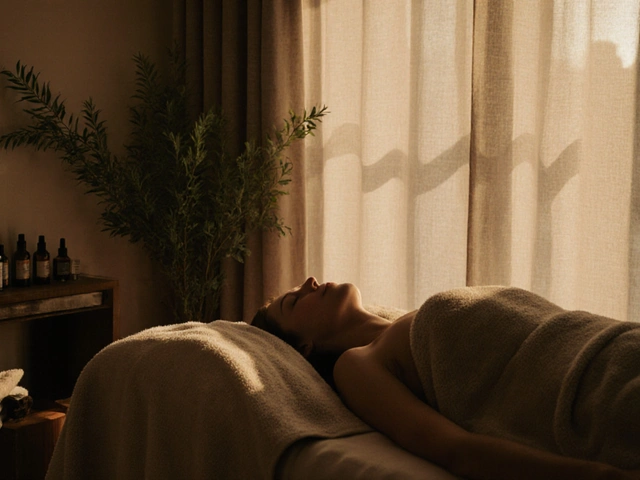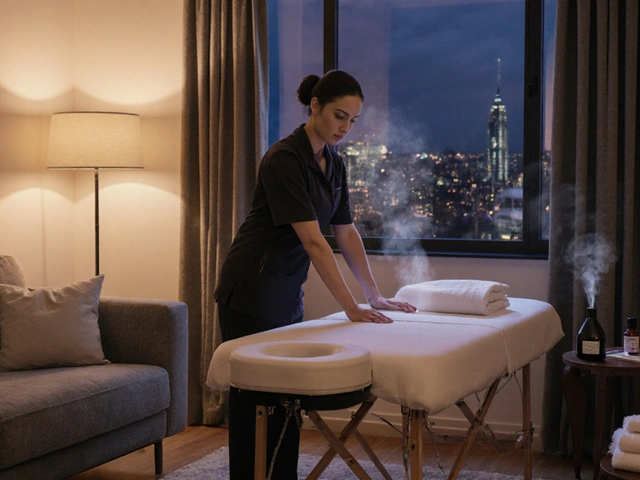Lymphatic Massage Types: Which One Is Right for You?
If you’ve heard about lymphatic massage but aren’t sure what it actually involves, you’re not alone. The main idea is to help your body move fluid more efficiently, which can reduce swelling, boost immunity, and speed up recovery after injury. Different therapists use slightly different techniques, and each one feels a bit unique. Below you’ll find the most common types, what to expect during a session, and simple tips for picking the right approach.
Common Lymphatic Massage Techniques
Manual Lymphatic Drainage (MLD) – This is the classic method developed by the Vodder brothers. The therapist uses very light, rhythmic strokes that follow the direction of your lymph vessels. You’ll feel a gentle pulling motion rather than deep pressure. MLD is popular for post‑surgery swelling, cellulite reduction, and general detox.
Vodder Technique – Often used interchangeably with MLD, the Vodder technique adds a few specific hand movements called “pump” strokes. These help open the main lymph nodes in the neck, armpits, and groin. People who suffer from chronic sinus issues or facial puffiness tend to notice quick results.
Trigger Point Lymphatic Therapy – Here the therapist combines traditional lymphatic strokes with gentle pressure on tight knots (trigger points). The goal is to release muscle tension while still encouraging fluid flow. If you have a lot of sore muscles from sports or desk work, this hybrid approach can feel especially soothing.
Lymphatic Pump Massage – This style uses a slightly firmer, wave‑like motion that mimics the body’s own lymph pump. It’s often paired with breathing exercises, because deep breaths naturally boost lymph movement. Clients report a calming effect and a noticeable lift in energy after a session.
Light‑Touch Lymphatic Massage – Some therapists prefer an ultra‑soft touch, especially for people with fragile skin or post‑cancer treatment. The strokes are barely perceptible, but they still stimulate the superficial lymph network. It’s a safe entry point if you’re new to lymphatic work.
Choosing the Right Lymphatic Massage for You
First, think about why you want the massage. If you’re dealing with post‑operative swelling, a traditional MLD or Vodder session is usually the best bet. For athletes or anyone with tight muscles, the trigger‑point blend can hit two birds with one stone.
Second, consider your comfort level with pressure. Light‑touch sessions are perfect for beginners or people with sensitive skin, while the pump technique suits those who enjoy a bit more movement.
Third, check the therapist’s credentials. Look for certifications in lymphatic drainage from recognized schools such as the Lymphology Training Institute or a comparable program. A qualified therapist will ask about your medical history, explain each step, and let you stop if anything feels uncomfortable.
Finally, plan for after‑care. Most experts recommend drinking plenty of water, moving gently for a few hours, and avoiding tight clothing that could restrict fluid flow. Simple stretches or a short walk can help lock in the benefits.
By matching your goal with the right technique, you’ll get the most out of a lymphatic massage and notice quicker recovery, less puffiness, and a calmer feeling overall. Ready to try? Book a short introductory session, mention the specific technique you’re curious about, and see how your body responds. You might be surprised at how light touch can make a big difference.
Looking to feel healthier and more energized? Lymphatic drainage massage might be just what you need to boost your immune system. This article breaks down what the massage is, how it works, and why people love it. You’ll get tips on finding services near you, what a session feels like, and answers to common questions. No fancy talk—just simple info you can use right away.
Read More




